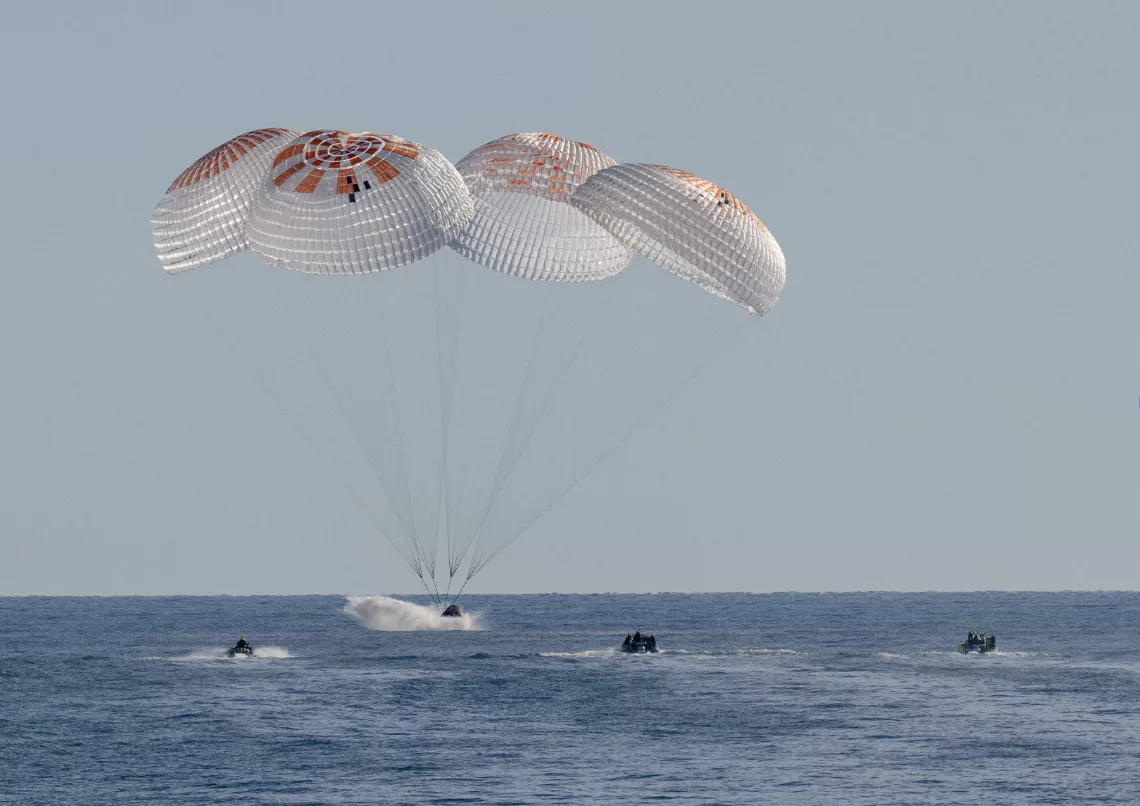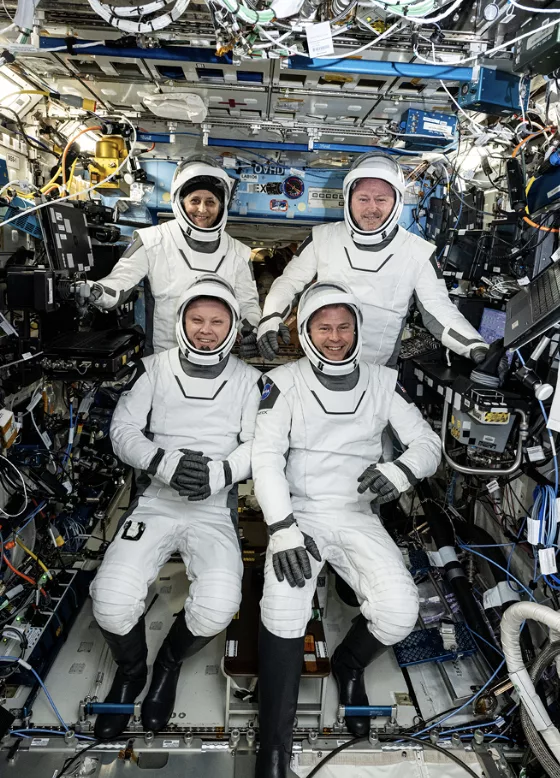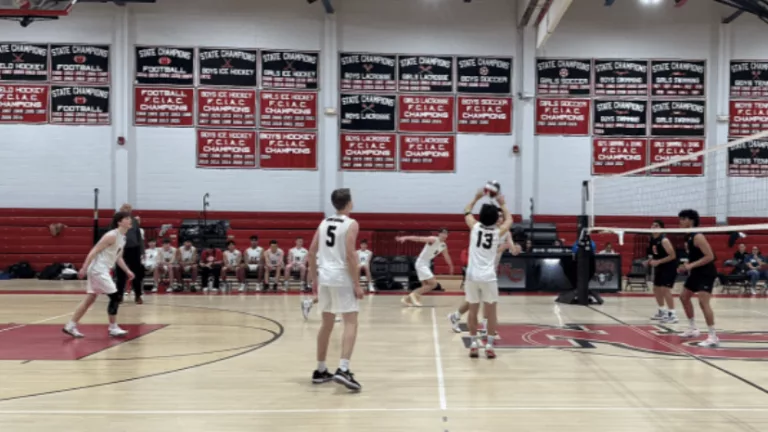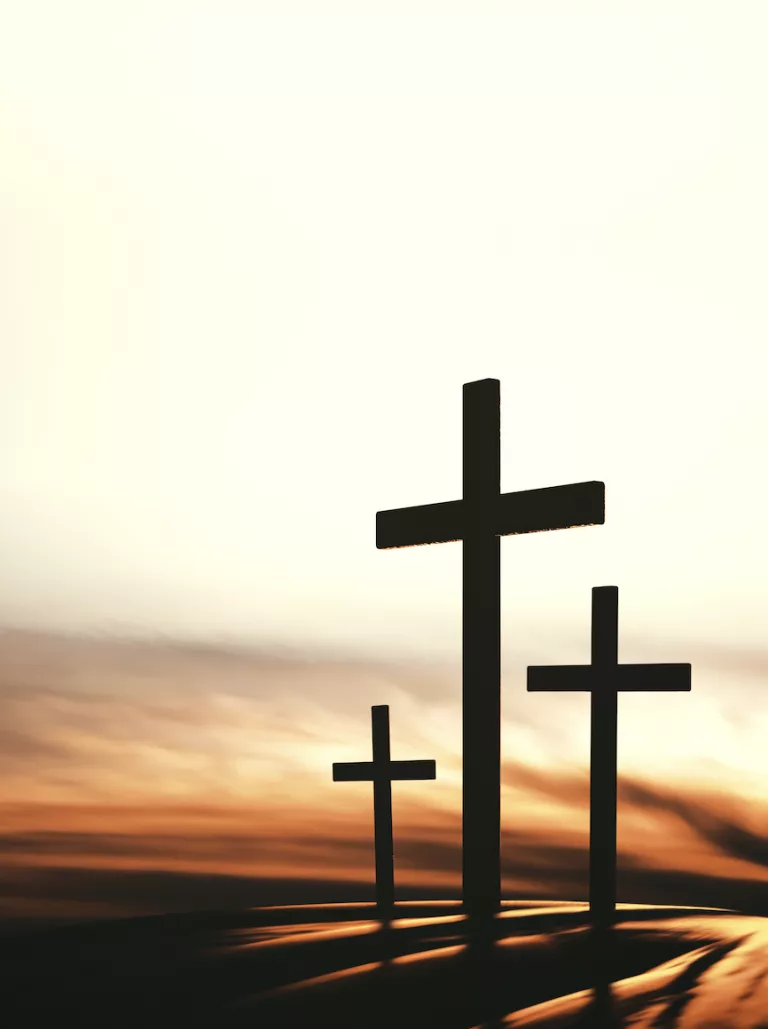
By Elizabeth Barhydt
The astronauts are home. SpaceX Crew-9 splashed down safely off the coast of Florida on March 18, bringing NASA astronauts Suni Williams, Butch Wilmore, and Nick Hague, along with Roscosmos cosmonaut Aleksandr Gorbunov, back to Earth after months aboard the International Space Station. But just days before their return, Williams was floating in orbit, speaking to an audience at Christ Church. Projected onto a giant screen in the sanctuary, she shared insights on resilience, life in space, and the perspective gained from circling the planet 16 times a day.
Suni Williams floated, her hair drifting upward, her movements slow and deliberate as she navigated the confined space of the International Space Station. She was being interviewed by Marek Zabriskie, the rector at Christ Church and a former reporter as well as interacting with the audience gathered there, her image projected onto a giant screen in the chancel, the connection between Earth and orbit clear, the voices steady despite the miles of empty space between them.
“I have actually loved it,” she said, moving effortlessly through the station. “Before this occurred, I felt like going up for just a week was very short, and this has given me lots of additional time to learn more about life in space, to conduct experiments, to learn from my fellow astronauts, and to learn more about myself in the process.”
The church pews were filled with parishioners and schoolchildren, watching as she demonstrated how she and her fellow astronauts lived. She showed them where they ate, exercised, and conducted experiments. She described her workout routine, running on a treadmill mounted to the wall while strapped into a harness to keep her from floating away. She explained how astronauts maintain muscle mass and bone density in a weightless environment.

When an American crewmate handed her an apple, it floated between them for a moment before she caught it. “It looked fresh and nutritious and as though she had just been shopping at Whole Foods,” Zabriskie observed. Williams demonstrated the process of rehydrating freeze-dried corn, injecting hot water into a vacuum-sealed bag before eating.
She spoke about faith. Her mother is Christian, her father Hindu. She wears a cross around her neck. On previous missions, she had taken a copy of the Bhagavad Gita into space, then later the Upanishads. She described how looking at Earth from space had deepened her sense of perspective.
“The world is completely unified,” she said. “There are no boundaries, only one people; no countries, only one human species; no tribes, races, nationalities, religions, economic levels, or genders, only one people created by God.”
She described her participation in a triathlon in space—running on the treadmill, cycling on a stationary bike, and simulating swimming using resistance equipment. She spoke about the astronauts from Russia and Japan aboard the station, how they worked together, sharing knowledge and research in their respective modules.
Her husband and Jack Russell terrier remained in Houston. The dog’s paw prints are tattooed on her arm. She speaks regularly with her husband and her mother. She missed taking a shower.
On March 18, she returned to Earth.
The SpaceX Crew-9 capsule carrying Williams, Barry “Butch” Wilmore, Nick Hague, and Aleksandr Gorbunov splashed down off the coast of Tallahassee, Florida, at 5:57 p.m. EDT. Recovery teams aboard SpaceX vessels retrieved the capsule and its crew before transporting them back to shore. They would soon be flown to NASA’s Johnson Space Center in Houston, where Williams would reunite with her husband.
In a release, NASA Administrator Janet Petro credited the ground teams and international coordination that brought the crew home. “NASA and SpaceX worked diligently to pull the schedule a month earlier. This international crew and our teams on the ground embraced the Trump Administration’s challenge of an updated, and somewhat unique, mission plan, to bring our crew home. Through preparation, ingenuity, and dedication, we achieve great things together for the benefit of humanity.”
Williams and Wilmore had traveled 121,347,491 miles over 286 days, completing 4,576 orbits. Williams conducted two additional spacewalks, bringing her total to 62 hours and six minutes, more than any other female astronaut in history.
The crew had contributed to over 150 scientific experiments. They studied plant growth in microgravity, tested stem cell technology, examined the long-term effects of space travel on the human body. They analyzed whether microorganisms could survive in space, installed patches to repair light filters on an X-ray telescope, and collected samples from the exterior of the station.
The research will continue with the next crew rotation.
The event at Christ Church had been the first time Williams had spoken from space to a faith community. The conversation had been arranged by Len Laporta, a parishioner and her former classmate at the U.S. Naval Academy.
She had been asked about the future—about Mars, about the next step in human space exploration. “Humans will need a successful base on the Moon to resupply and support any future colony on Mars,” she had said. “We need to establish that first.”
There is hope that Williams will visit in person soon..



